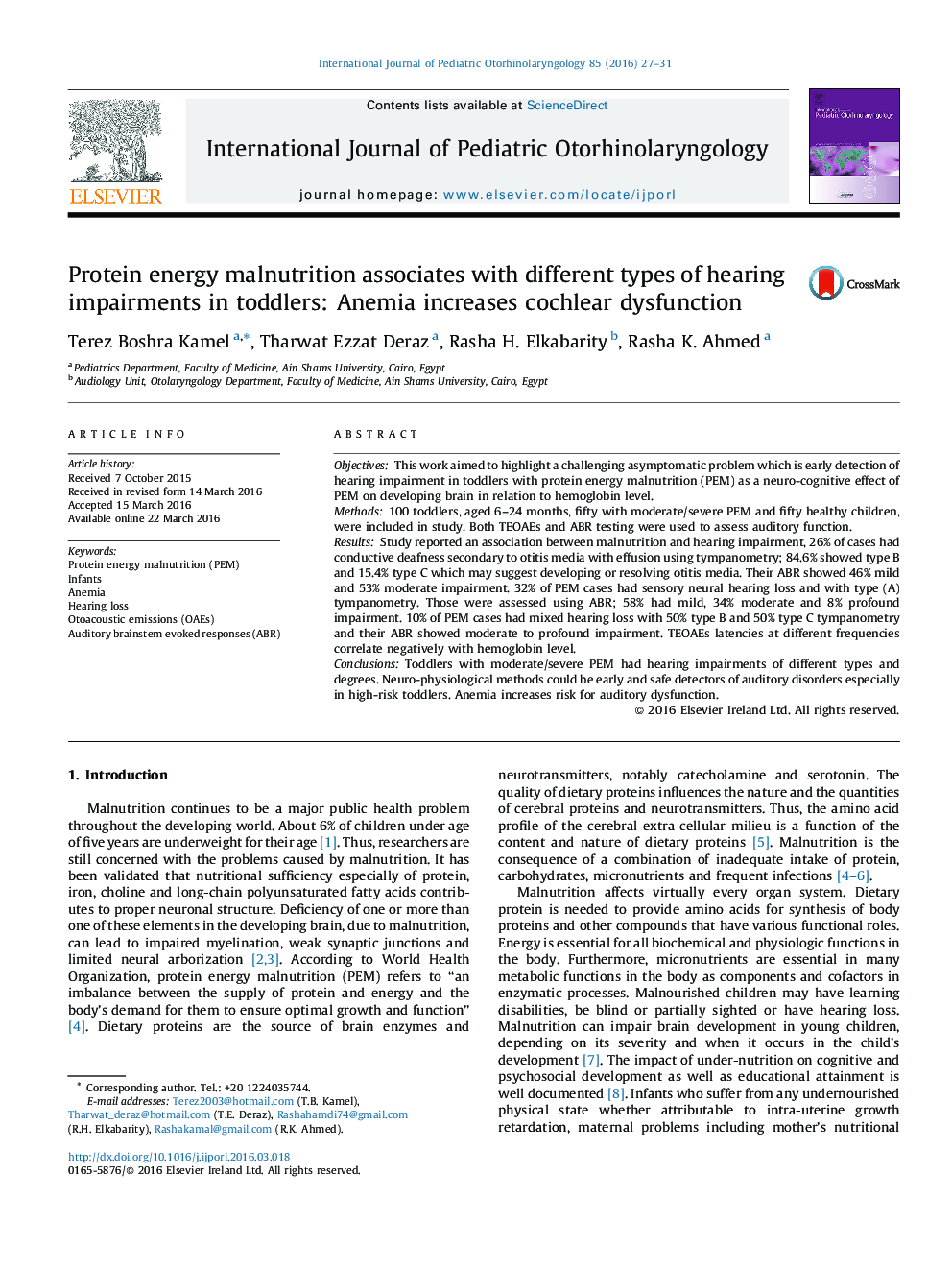| Article ID | Journal | Published Year | Pages | File Type |
|---|---|---|---|---|
| 6213121 | International Journal of Pediatric Otorhinolaryngology | 2016 | 5 Pages |
ObjectivesThis work aimed to highlight a challenging asymptomatic problem which is early detection of hearing impairment in toddlers with protein energy malnutrition (PEM) as a neuro-cognitive effect of PEM on developing brain in relation to hemoglobin level.Methods100 toddlers, aged 6-24 months, fifty with moderate/severe PEM and fifty healthy children, were included in study. Both TEOAEs and ABR testing were used to assess auditory function.ResultsStudy reported an association between malnutrition and hearing impairment, 26% of cases had conductive deafness secondary to otitis media with effusion using tympanometry; 84.6% showed type B and 15.4% type C which may suggest developing or resolving otitis media. Their ABR showed 46% mild and 53% moderate impairment. 32% of PEM cases had sensory neural hearing loss and with type (A) tympanometry. Those were assessed using ABR; 58% had mild, 34% moderate and 8% profound impairment. 10% of PEM cases had mixed hearing loss with 50% type B and 50% type C tympanometry and their ABR showed moderate to profound impairment. TEOAEs latencies at different frequencies correlate negatively with hemoglobin level.ConclusionsToddlers with moderate/severe PEM had hearing impairments of different types and degrees. Neuro-physiological methods could be early and safe detectors of auditory disorders especially in high-risk toddlers. Anemia increases risk for auditory dysfunction.
